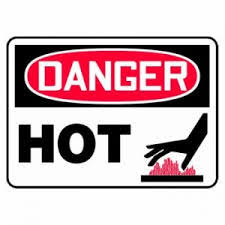Severe workplace burns are always ugly and Heinz Watties hit the headlines twice last week:
NZ Herald Boiling brine in gumboots costs Wattie’s $330,000, and,
Stuff.co.nz Heinz Wattie’s fined $281,000 after worker burned by brine
What happened?
– In May 2017 a vat full of brine boiled over
– While attempting to turn the machine off, boiling brine flowed into a worker’s gumboots
– The worker was not provided with appropriate PPE
– The burns suffered were ‘full thickness’, extremely painful and disfiguring
What did the courts say?
– Heinz Wattie’s were aware the vats were likely to boil over and the risk to workers
– The vats had boiled over in the past and previously burned another worker
– The worker was not provided with adequate training or supervision, workers had merely been told to ‘avoid the vats’.
– The worker was provided with inadequate PPE
Quote of the case from Simon Humphries: Specialist Investigator WorksafeNZ.
“When you know there’s a problem, the law requires you to fix it. They didn’t and that is simply not acceptable.”
Fine: $281,250
Reparations: $50,000
What can you and your team do to prevent workplace burns on your site?
Engineering
• Fix It! If a piece of plant is malfunctioning, then fix it!
• Cages: Put cages around hot equipment to avoid accidental contact.
• Cladding: If a surface is hot then if possible clad it
• Time/ Temp Auto Cut Off: Purchase equipment that automatically switches off after a set period of time or has safety features to prevent the user from being exposed to hot parts.
• Control Temp levels: Limit the temperature of hot water taps. Where this is not practical, implement a method to check the temperature of the water before use.
Other Ways of Managing Hot Stuff
• Signage: If you can’t use cladding or some other kind of barrier put up signage
• Exclusion Zones: Use tape or paint to create pedestrian exclusion zones around hot surfaces see Traffic management in manufacturing
PPE
• Industrial overalls could have reduced the severity of the incident. See AS/NZS 4602.1:2011 High visibility safety garments – Part 1: Garments for high-risk applications
• Footwear: alternative footwear may have also prevented this injury see Occupational safety footwear (AS/NZS 2210.1).
Supervision and Training
– All workers need to be inducted, trained and supervised so they can do their job safely
Emergency Response
Develop procedures to ensure that any burns are treated appropriately and covered while healing so that work doesn’t exacerbate them. See St John first aid guide on how to treat burns.
If you have anything to add to the list of how to prevent workplace burns please call Sarah on 0272 007 680 or email sarah@employmenow.co.nz.
Have a safe and productive week.
SB
